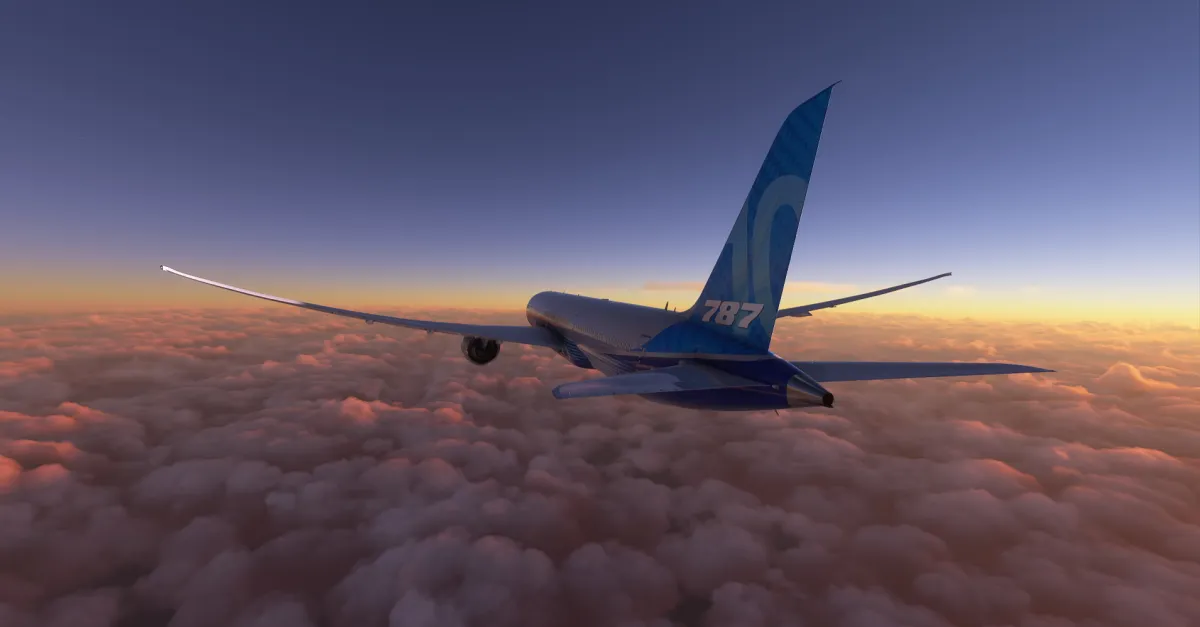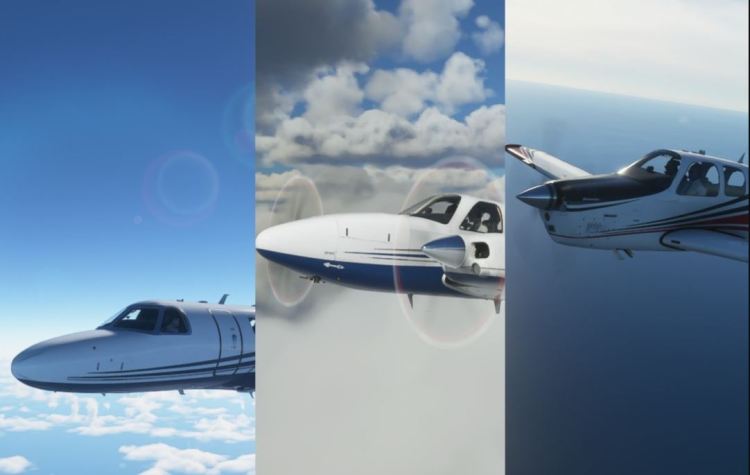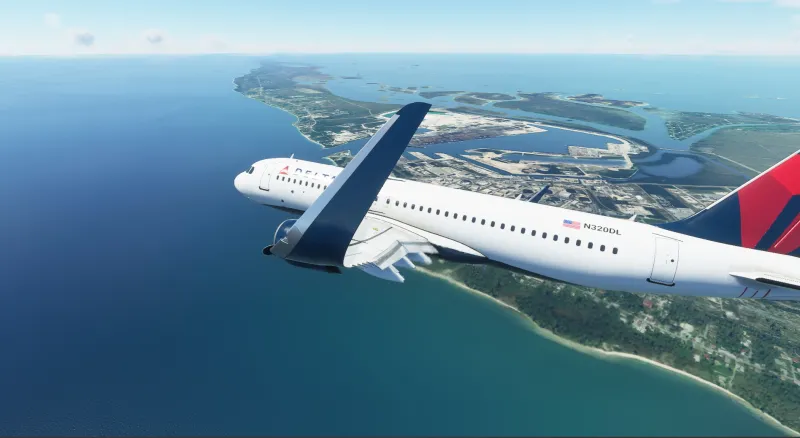I love Flight Simulator — However, after playing it for over a week at this point with the Premium Deluxe edition, I can safely say that you really don’t need it. And you shouldn’t feel bad if you don’t have it. Considering that I’ve been playing various entries of Microsoft Flight Simulator since the age of three, you would think I’m one of those die-hard sim enthusiasts who has a whole set of peripherals dedicated to my “craft.” But, I’ll be honest with you — I’m cheap.
Budget flier miles
I own a single Thrustmaster HOTAS joystick that I bought several years ago (used), and that’s it. Until recently, FSX was my main sim of choice, and I’ve honestly bought just a handful of add-ons for it — all on sale, and nothing more than maybe $25 USD.
My sim is loaded with various add-ons, mind you, though the rest are just all freeware (fight me). Even after getting into X-Plane 11 only just a month ago, I have yet to buy a single add-on for it, and I probably won’t ever.
As much as I love flight sims, I don’t like spending money on them outside of the initial purchase. That’s why the new Microsoft Flight Simulator left me a little torn. It has three different editions: Standard for $60 USD; Premium for $90 USD; and Premium Deluxe for a whopping $120 USD. As attractive as the final option looks, that’s quite the pretty penny.
Now, I did go ahead and say that I have it. But, the only reason for that is that I received the review copy from Microsoft. Had this not been, there’s about a 99.5% chance I would’ve just opted for the Standard Edition. So, considering that I got the upgrade, what’s the problem? I know, I kind of look like someone getting a first-class ticket for free and then being only mildly amused by it. But, allow me to explain.
How much is too much?
The Premium Deluxe edition comes with 10 additional planes and airports over the Standard Edition. Breaking down the extra $60 USD across all the included extra content, it boils down to each airport and aircraft costing about $6 USD a piece.
This is a steal in contrast to typical flight sims where single add-ons often go for at least $20 USD (and that’s being very generous). So, looking at it that way, the $120 USD price tag isn’t so bad. But, you still don’t need the upgrade.
Let’s first talk about the airplanes. Out of all of the extra planes, I’ve honestly only flown four of them. But, only one of those has been somewhat regular: the Beechcraft Baron. Even then, it’s still not something I’ve used extensively.
My most-flown aircraft would be the TBM 930 and Beechcraft Bonanza, both of which you get in the Standard Edition. If your interest is mostly medium- or long-haul commercial flying, then the included Airbus A320neo is quite suitable for just about any route. Beyond that, the massive Boeing 747 is there to handle anything major if you fancy it.
While the Premium Deluxe will net you the beautiful Boeing 787 Dreamliner, it’s nothing to lose your mind over. It’s certainly quite the looker and I like how it flies, but I don’t see the need to pick it over the A320neo for twin-engine hauling.
The vast majority of aircraft in any version of the sim are general aviation anyway, and the Standard Edition already comes with enough that can cover every facet of flight. If you want to go on bush trips, the X Cub is perfectly fine.
For standard VFR, you have your typical Cessna Skyhawk selection, along with more powerful options like the Beechcraft Bonanza and Diamond DA62. For longer GA trips at high speed, the TBM 930 and King Air will be just fine if you want to stick to props. However, the Cessna Citation CJ4 business jet gives you the fanciest offering for getting anywhere pretty quickly.
Again, all of these planes are already available to everyone with the Standard Edition. And (be honest with yourself) are you really going to use all of the aircraft — regardless of which version you have — regularly?
While everyone is different, I’m confident that if you’re anything like me, you may toy around with at least a handful of the aircraft, see which ones you like most, and then keep revisiting that small collection. Especially since a lot of these aircraft are pretty similar in capabilities, there’s hardly much reason to bounce around. And, from a real-world aspect, most pilots tend to fly the same plane on a consistent basis anyway, whether it be for personal or commercial purposes. Only in a flight sim can a single person have control over such variety at once.
Airport overdose
The pro vs. cons argument for airports is even less complicated. While the handcrafted airports in Flight Simulator are certainly beautiful, the only way to get the maximum benefit is to fly to them all (or at least, most) fairly regularly. On top of that, you’d also have to fly between two handcrafted airports as much as possible.
Otherwise, you’ll either start or end your flight at a “regular” airport anyway. And considering that the handcrafted airports are scattered all over the world, it’s easy to see how impractical that aforementioned idea is.
That being said, keep in mind that all the handcrafted airports do is add an additional level of complexity to airports that are already in the sim. Think about it: the whole goal of Flight Simulator is to, well, fly! Thus, you’ll spend very little time at any given airport already. Having it look like the real deal adds to the immersion. However, unless you’ve seen it in real life, then it objectively doesn’t matter how it looks, now does it?
I’ve only visited two handcrafted airports so far: SEQM in Quito, Ecuador and KMCO in Orlando, Florida. I’ve flown in and out of both airports in real life several times, so I can say for sure that they’ve been recreated very well here in Flight Simulator.
My main focus continues to be the surrounding area. Now that we have true satellite imagery and proper 3D buildings populating the map, this is where the visual magic can be found. You may see the airports for a few minutes during a flight, but the world around you is what you’ll spend most of your time gazing at. In the grand scheme of things, having the extra handcrafted airports is a nice bonus, but not really much of a necessity.
The concept of diminishing returns
Don’t get me wrong, I don’t think that the fancier editions aren’t worth it. But, for the average player, the Standard Edition is sure to suffice most, if not all , of your needs. And, if you’re one of the folks who are playing via Game Pass for PC, you shouldn’t feel left out.
It would be nice if Microsoft released the individual contents of the Deluxe/Premium Deluxe editions as DLC. That way, you could pick and choose what you want specifically — options are always nice. All things considered, though, you can surely get by for quite some time on what comes with the sim in its base form.










Published: Aug 27, 2020 3:30 PM UTC